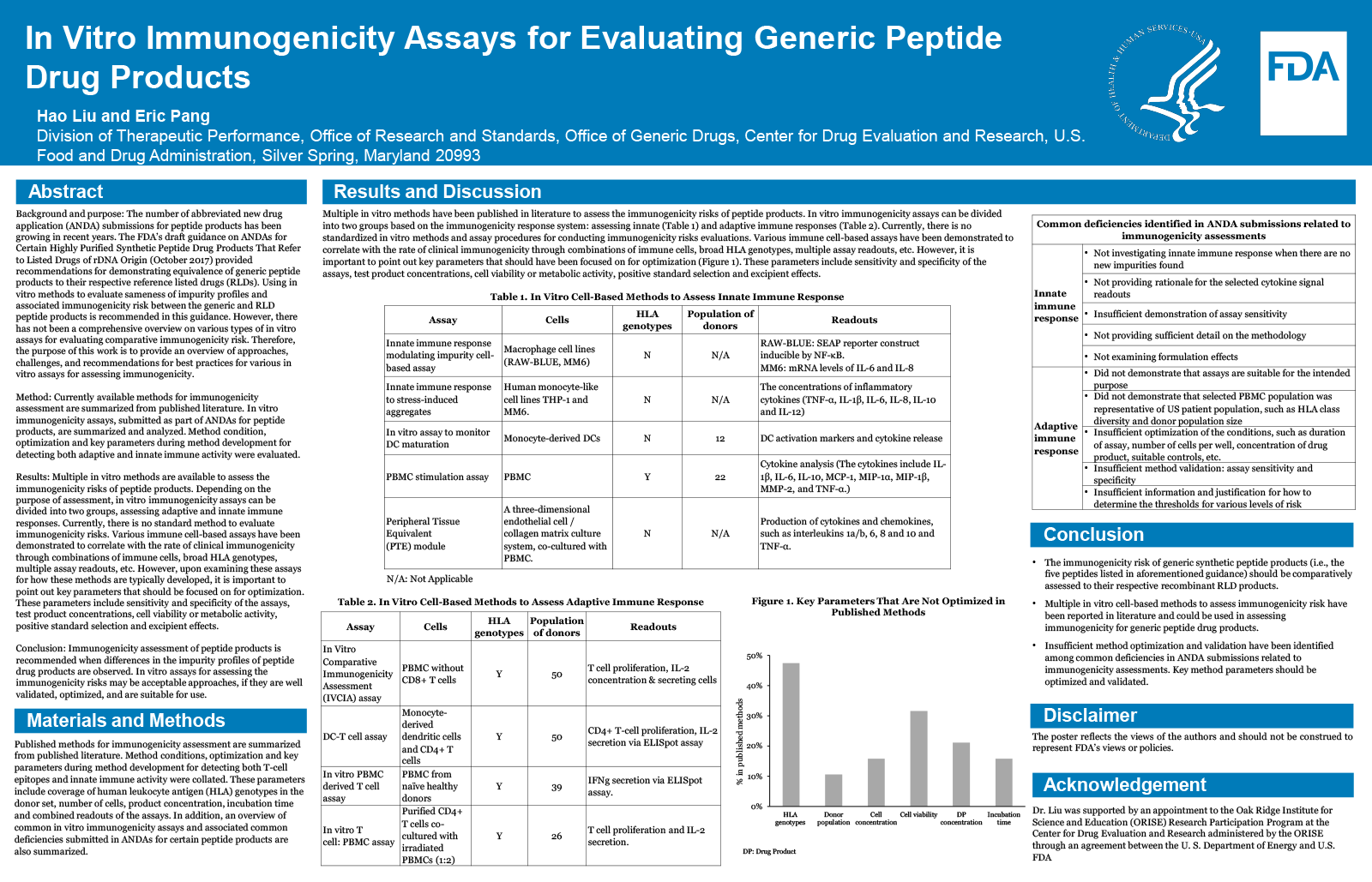2021 FDA Science Forum
In Vitro Immunogenicity Assays for Evaluating Generic Peptide Drug Products
- Authors:
- Center:
-
Contributing OfficeCenter for Drug Evaluation and Research
Abstract
Background and purpose
The number of abbreviated new drug application (ANDA) submissions for peptide products has been growing in recent years. The FDA’s draft guidance on ANDAs for Certain Highly Purified Synthetic Peptide Drug Products That Refer to Listed Drugs of rDNA Origin (October 2017) provided recommendations for demonstrating equivalence of generic peptide products to their respective reference listed drugs (RLDs). Using in vitro methods to evaluate sameness of impurity profiles and associated immunogenicity risk between the generic and RLD peptide products is recommended in this guidance. However, there has not been a comprehensive overview on various types of in vitro assays for evaluating comparative immunogenicity risk. Therefore, the purpose of this work is to provide an overview of approaches, challenges, and recommendations for best practices for various in vitro assays for assessing immunogenicity.
Method
Currently available methods for immunogenicity assessment are summarized from published literature. In vitro immunogenicity assays, submitted as part of ANDAs for peptide products, are summarized and analyzed. Method condition, optimization and key parameters during method development for detecting both adaptive and innate immune activity were evaluated.
Results
Multiple in vitro methods are available to assess the immunogenicity risks of peptide products. Depending on the purpose of assessment, in vitro immunogenicity assays can be divided into two groups, assessing adaptive and innate immune responses. Currently, there is no standard method to evaluate immunogenicity risks. Various immune cell-based assays have been demonstrated to correlate with the rate of clinical immunogenicity through combinations of immune cells, broad HLA genotypes, multiple assay readouts, etc. However, upon examining these assays for how these methods are typically developed, it is important to point out key parameters that should be focused on for optimization. These parameters include sensitivity and specificity of the assays, test product concentrations, cell viability or metabolic activity, positive standard selection and excipient effects.
Conclusion
Immunogenicity assessment of peptide products is recommended when differences in the impurity profiles of peptide drug products are observed. In vitro assays for assessing the immunogenicity risks may be acceptable approaches, if they are well validated, optimized, and are suitable for use.

